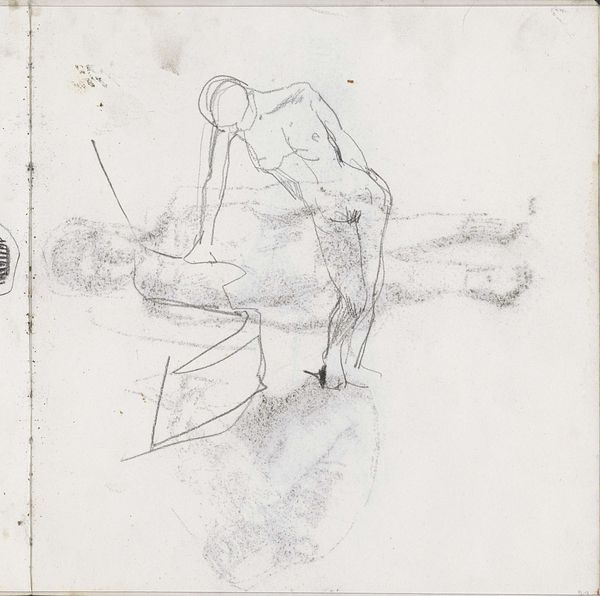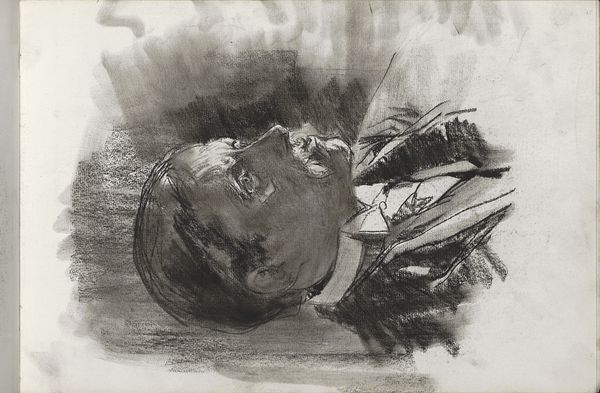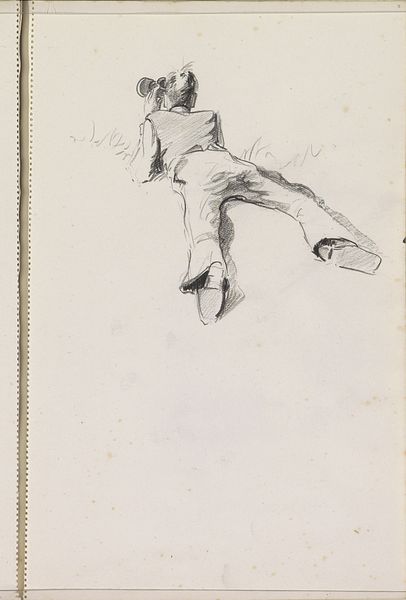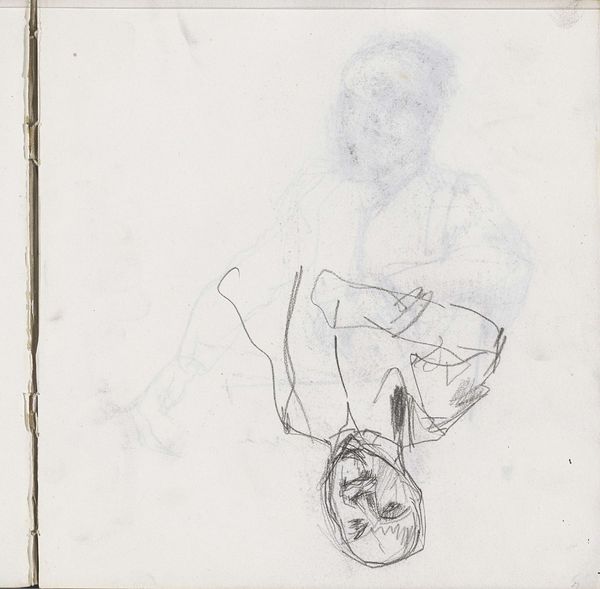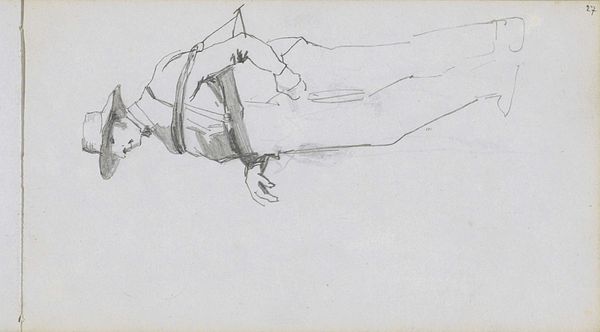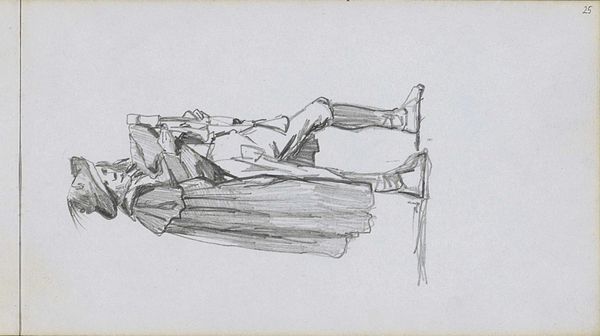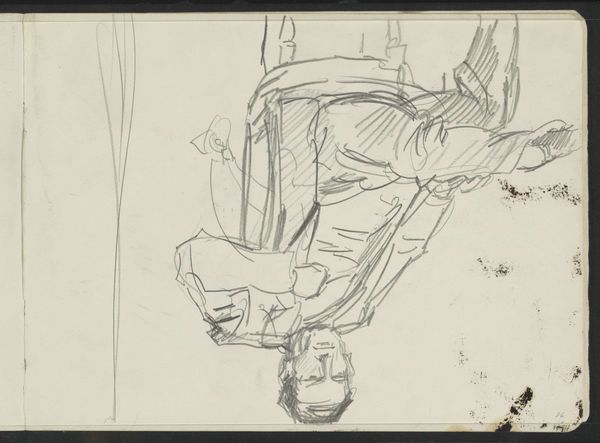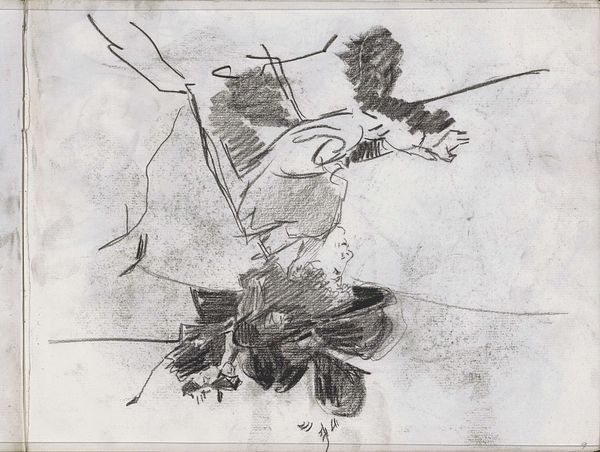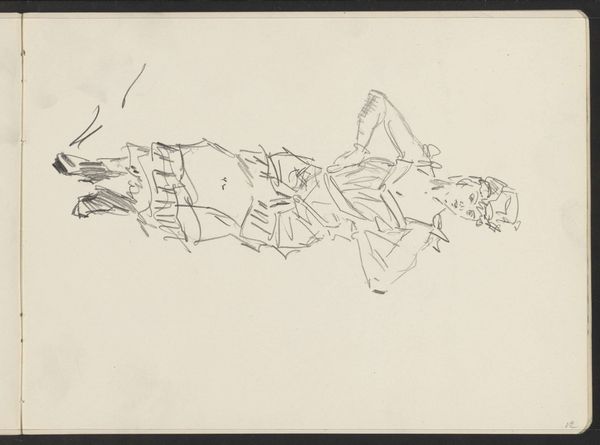
drawing, charcoal
#
portrait
#
drawing
#
pencil sketch
#
study drawing
#
charcoal drawing
#
figuration
#
pencil drawing
#
sketch
#
portrait drawing
#
charcoal
Copyright: Rijks Museum: Open Domain
Curator: Here we have “Jongen zittend in een kruiwagen,” which translates to “Boy Sitting in a Wheelbarrow,” created sometime between 1865 and 1913, and held at the Rijksmuseum. It’s rendered with charcoal and pencil. Editor: My immediate feeling is of transient childhood, like a fleeting moment captured in sepia tones. There is an intimate feel to this glimpse. Curator: Transient, yes, certainly reflecting the stylistic inclination for sketches characteristic of the time. You know, a sketch captures a very different truth from a more finished piece, like an early memory, elusive yet suggestive. The wheelbarrow is, itself, symbolic – representing labor, the potential for movement and change, but here it contains stillness, perhaps reflecting childhood as a phase of being prepared for future labor. Editor: Interesting how you attach meaning to the wheelbarrow itself. I see it also as an invitation to observe the everyday lives of children. It certainly is more intimate compared to those posed formal family portraits that we often encounter. But why this focus? Does it connect to social changes or prevailing political attitudes? Curator: Possibly a bit of both, although the specifics depend on pinning down the exact date. But this study gives us an opportunity to connect to the artist and his subject at a more intimate level, where his daily life becomes our point of reflection as well. He might have simply sought to seize the momentary, the pure gesture... and we as viewers still get the privilege to witness. Editor: I agree that we are given a kind of privilege here, which is amplified by the vulnerability and the spontaneity rendered on paper with visible brushstrokes. And it urges us to think more deeply about the concept of play as a site for cultural values, expectations, and socialization in art and society. Curator: The drawing really emphasizes not just the boy's form, but also evokes larger narratives around childhood, work, and transience that transcend the image itself. Editor: Ultimately, for me, this piece offers a silent yet compelling study on societal perspective and the poignancy of ephemeral youth within art's historical trajectory.
Comments
No comments
Be the first to comment and join the conversation on the ultimate creative platform.
